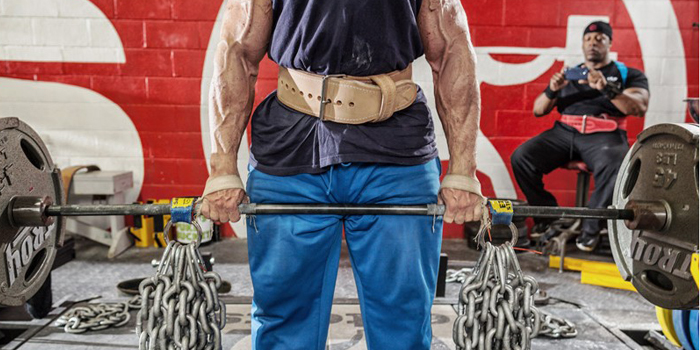
Originally published in 2014
In this article, Mark Watts explains (again) how not to use chains attached to a barbell. In his words: "If you have been using chains as accommodating resistance since you learned about them from Dave Tate or Louie Simmons then this video is not for you. In fact, you have probably explained this to a number of people countless times probably better than I have. For a more detailed explanation, check out JL Holdsworth's Friday Technique video on setting up chains."
Benefits of Using Chains for Beginners (When Setup Correctly)
I often hear that accommodating resistance is not appropriate for beginners, and I can't disagree more. Yes, I realize that is is not advisable to add band resistance for an athlete that bench presses 95 pounds, but there are some positives for using bands and chains:
- With the load being lighter at the bottom of the movement, it allows for the athletes to be comfortable at the most precarious position of the lift, especially for the squat. This adds confidence for lifters who have apprehensions about getting to depth. Squat depth is almost always the biggest technique discrepancy.
- Chains can assist with alleviating soreness. Beginning lifters will get discouraged from DOMS after lifts. The weight being lighter off the chest or at the bottom of the lift can reduce soreness because the load is less at the pre-stretch position.
- The most obvious benefit is the use of chains forces the lifter to continue to strain during the entire repetition. More motor recruitment for the same amount of reps can benefit beginners immensely.
Benefits of Using Chains for Beginners (When Setup Incorrectly)
None. There aren't any.
Let's use a better example than what was on the video. Chains attached end-to-end on the bar is WRONG. Here's some math to explain it:
- Bar and plate weight: 200 pounds
- Chain weight: 80 pounds (two chains per side)
- Total weight at top: 240 pounds
- Total weight at bottom: 220 pounds
- Difference between top weight and bottom weight: 20 pounds
Now let's do the math again for the correct setup, using an EZ Loader or feeder chain:
- Bar and plate weight: 200 pounds
- Chain weight: 80 pounds (two chains per side)
- Total weight at top: 280 pounds
- Total weight at bottom: 200 pounds
- Difference between top weight and bottom weight: 80 pounds
This not only allows a full deload of weight at the bottom, but also a roughly 40% difference between the top weight and bottom weight.
I hope this video helps. I also added some hashtags myself as a review of my presentation in this video:
#badacting
#tuckyourshirtin
#lisp
#dropafewlbs
#stateschooleducation
#overspeedeccentricsonlywithbandsdumbass
#strugglingtoholdupthosechains
#notascoolasjimwendler
#notasfunnyasdommazzetti
#smallertrapsthanelgintensity
#jlholdsworthisangryatthisvideo
#beatyoutoittrolls










1 Comment